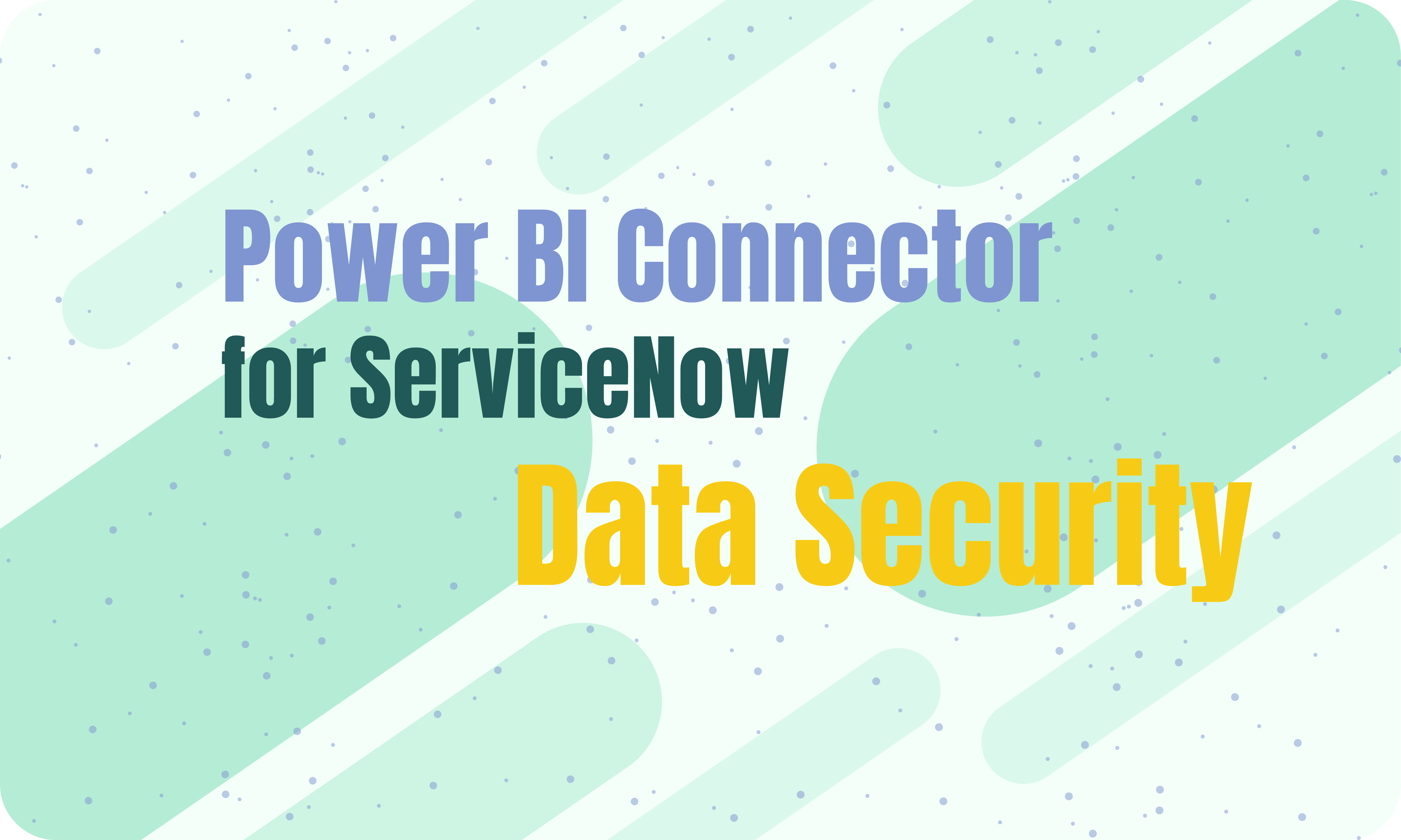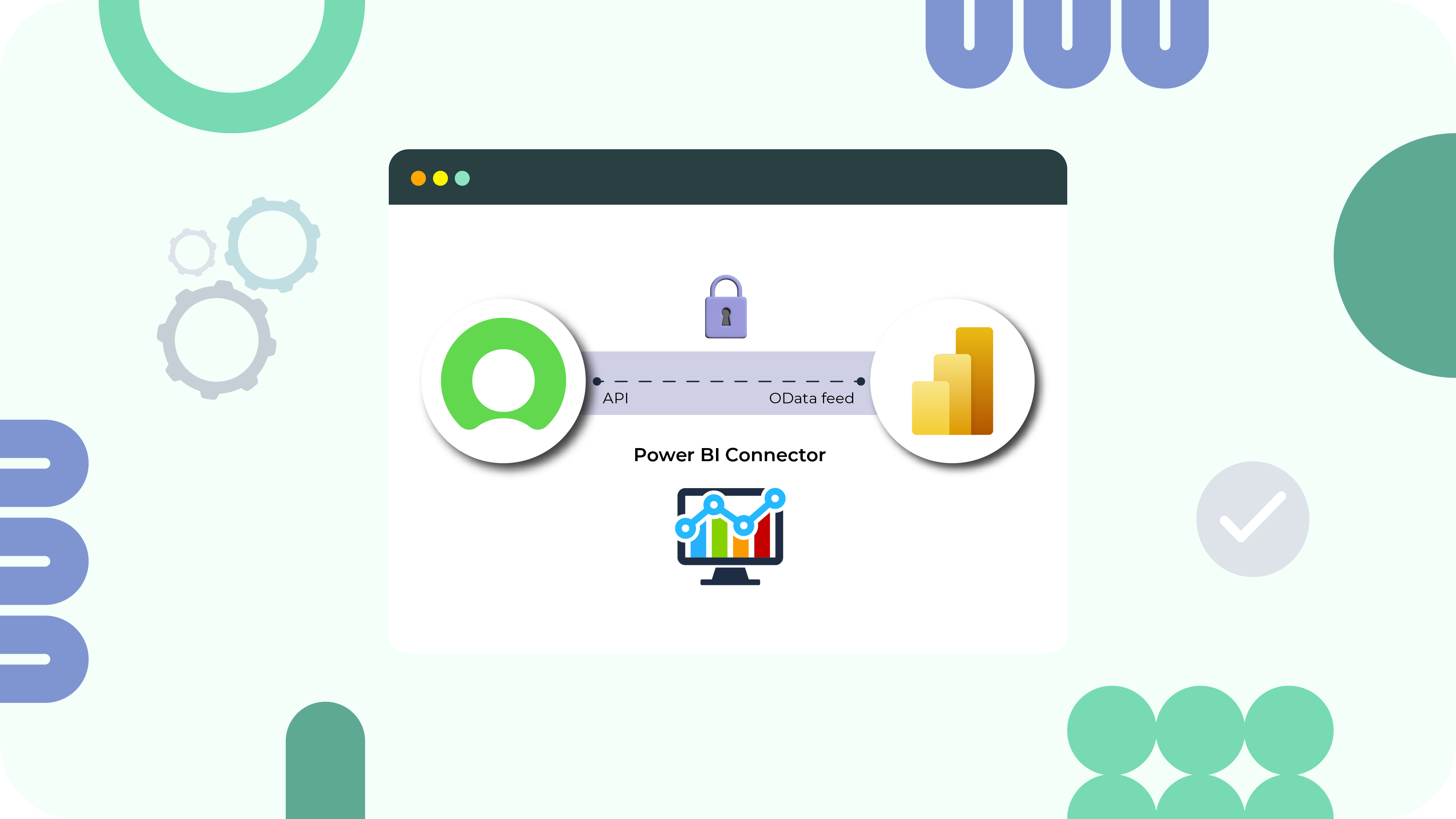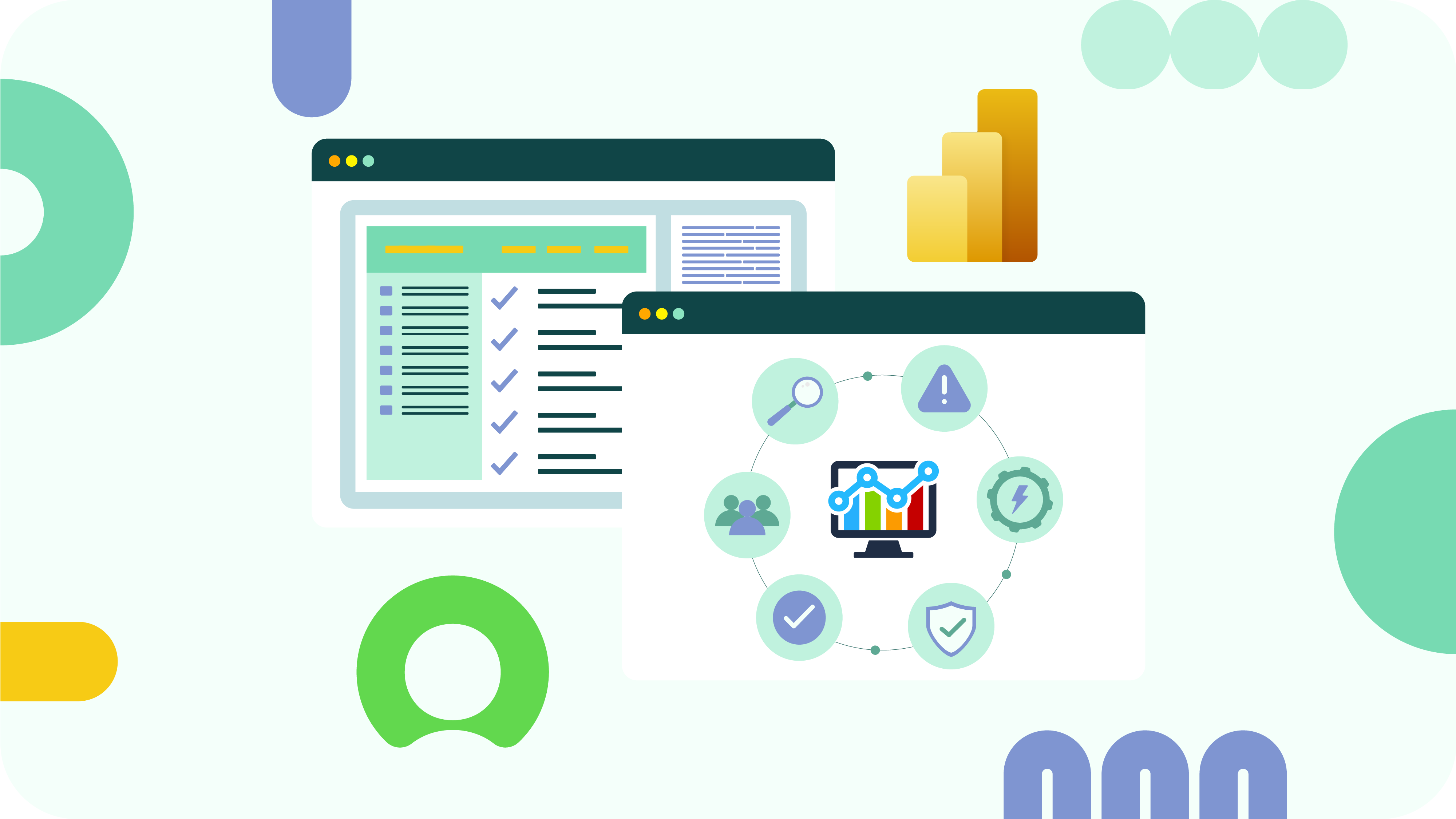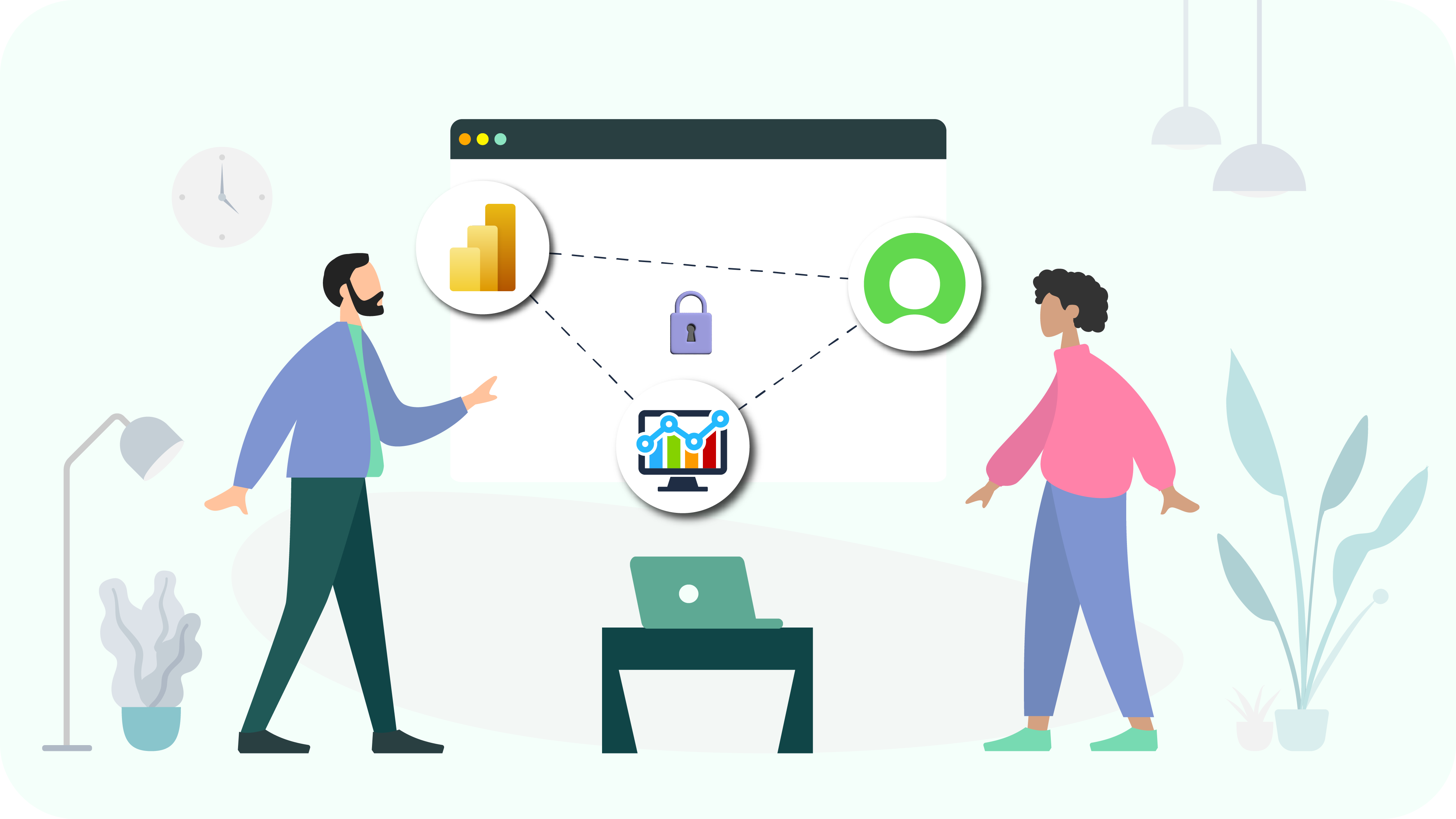Power BI Connector for ServiceNow represents a significant advancement in data accessibility and analytics for organizations operating the ServiceNow platform. Our ServiceNow apps adhere to strict privacy policies to protect your personal information. Amidst the seamless integration of ServiceNow and Power BI through the Power BI Connector, the main concern remains: Is my data secure?
Read this post to learn all the relevant details on the Data Security & Privacy Statement of Power BI Connector for ServiceNow to help our customers see what is happening with their data.
- Power BI Connector for ServiceNow: Architecture Designed for Security
- Security Requirements and Controls
- Power BI ServiceNow Authentication Mechanisms
- Error Handling and Logging
- Compliance Considerations
- Recap

Power BI Connector for ServiceNow: Architecture Designed for Security
The architecture of the Power BI Connector for ServiceNow by acSoft is meticulously crafted to ensure the secure export of data from ServiceNow tables to Power BI, employing advanced features such as the Open Data Protocol (OData). Unlike the default REST API Explorer, our connector offers advanced capabilities, including server-side and client-side data pagination, support for various field types, and expanded query options, providing users with a more intuitive interface for enhanced usability. Moreover, the app extends its functionality through a standalone service portal, offering users a convenient interface for creating, editing, and viewing data sources.
The architecture of the Power BI Connector for ServiceNow revolves around key components developed to facilitate efficient data integration and analysis:
1. Database “Data Sources” Table
This table is the central hold where users configure their data exports to Power BI. Users can define essential metadata such as data source names, descriptions, and configurations for fields and filters. This structured approach enables efficient management and organization of data exports, ensuring relevance and accuracy in analytics endeavors.
2. REST API Endpoints
The Power BI Connector for ServiceNow includes two REST API endpoints that are crucial for ServiceNow data export. These endpoints facilitate seamless navigation to required resources, such as metadata descriptions of the service model and collections of data resources like incidents and tasks. By providing these entry points, the application simplifies the data extraction process, improving performance and user experience.
3. Script Includes
Script Includes are vital in converting ServiceNow data into OData-compatible metadata and data. The MetadataBuilder Script Include generates OData XML metadata based on user-defined export configurations, while the PagedGlideRecord Script Include provides essential functions for retrieving and processing data from ServiceNow tables, ensuring compatibility with Power BI’s data requirements while adhering to stringent security protocols, safeguarding data integrity and confidentiality.
Overall, the architecture of the Power BI Connector for ServiceNow is designed with a security-first approach. By providing users with enhanced control over data exports, secure API endpoints, and robust data transformation mechanisms, the application prioritizes data security and empowers customers to confidently leverage their data for analytics purposes.
Security Requirements and Controls

Data security is prioritized through advanced measures that are continuously updated to address evolving threats. The Power BI Connector for ServiceNow ensures the secure retrieval of data from ServiceNow instances through safeguarded Scripted REST APIs and subsequent transfer to Power BI Services using the SSL protocol. The application does not collect, store, or process analytical or tracking data within ServiceNow products. Additionally, we do not integrate Google Analytics into our ServiceNow Store product pages to further ensure the protection of your data. Furthermore, robust access controls and encryption mechanisms are employed to safeguard data integrity during transmission.
Design Specifications
These outline the various assets of the application, such as Glide records, API endpoints, and webpages. Additionally, they detail the corresponding security controls implemented to protect these assets, such as access controls and secure data transmission protocols. For instance, the application may use default methods like `canRead()` to restrict access to Glide records, preventing unauthorized access and ensuring data security.
Data-Flow Diagrams (DFD)
These diagrams illustrate how data flows within the application, depicting how data is ingested, transformed, and transmitted. They help identify trust boundaries and access privileges, ensuring data integrity and security. For example, DFDs may highlight that users must have specific roles to access the application’s REST API service, maintaining control over data access. These diagrams provide a visual representation of the application’s data flow, aiding in understanding its architecture and security measures.
Data Classification
This process involves identifying the types of data the application handles and assessing their associated risks. In the Power BI ServiceNow Connector context, data classification may include categorizing data sources and exported datasets based on their sensitivity and confidentiality levels. This classification helps securely manage data to prevent unauthorized access and maintain confidentiality. While specific visualizations may not be associated with data classification, they are crucial steps in implementing appropriate security measures for the different types of data the application handles.
Power BI ServiceNow Authentication Mechanisms

Power BI Connector for ServiceNow authentication mechanisms are instrumental in safeguarding data integrity and ensuring authorized access to the application, ensuring that only authorized users can access and interact with the application’s features and data. The application implements powerful authentication protocols to verify the identity of users and safeguard against unauthorized access.
One such mechanism is role-based access control (RBAC), where users are assigned specific roles that determine their level of access within the application, thereby bolstering security and preserving data integrity. These roles determine the scope of actions users can undertake, including creating, editing, viewing, or deleting data sources.
User Roles and Access Control
The connector offers three primary user roles which can be overwritten with admin role:
- powerbi_admin: Users assigned this role possess full access rights, enabling them to perform all actions within the application.
- powerbi_editor: Users with this role can create and modify data sources without the authority to delete them.
- powerbi_viewer: This role is restricted to viewing existing data sources, limiting users’ capabilities to modification or deletion.
In essence, the authentication mechanisms, particularly role-based access control (RBAC) serve as vital safeguards for data integrity and confidentiality. With tailored user roles dictating access privileges, organizations can confidently manage and protect their data assets, ensuring secure and controlled access to critical information.
Error Handling and Logging

Effective error handling and logging mechanisms are not just about maintaining smooth operation; they are critical components in safeguarding data integrity and enhancing data security within the Power BI Connector for ServiceNow.
In managing errors, the application relies heavily on its Scripted REST service, which effectively tackles standard REST errors such as “Not Found,” “Access Denied,” or “Bad Request.” It ensures a powerful error-handling mechanism for smoother operation, preventing potential security breaches or data inaccuracies.
Debugging focuses on ensuring data export accuracy. Errors are promptly shown in the Power BI app, offering clear feedback. Moreover, to aid in troubleshooting, users and technical support teams can utilize REST API clients like Postman or Curl to replicate the data export process and identify any underlying issues. This approach ensures swift error resolution and maintains the application’s reliability.
Improvements are ongoing in error handling and logging within the application. Addressing issues like data chunk size exceeding the maximum string length due to JSON response serialization is a priority. Additionally, attention is needed to handle empty values in specific fields, especially with various export modes.
Compliance Considerations

The application is designed to meet various compliance requirements, including but not limited to data privacy regulations such as GDPR (General Data Protection Regulation), HIPAA (Health Insurance Portability and Accountability Act), and CCPA (California Consumer Privacy Act).
Key compliance features include powerful data encryption mechanisms to protect sensitive information during transit and at rest, role-based access controls to restrict access to authorized users only, and comprehensive logging and auditing capabilities to track data access and usage.
Additionally, the application undergoes regular security assessments and audits to ensure compliance with evolving regulatory requirements and industry standards. By prioritizing compliance considerations, the Power BI Connector for ServiceNow provides organizations with the confidence that their data is handled securely and compliant, mitigating risks and safeguarding against regulatory penalties.
Recap
The ServiceNow Power BI Connector is a crucial integration tool, facilitating enriched data accessibility and analytics while emphasizing stringent privacy measures. The application ensures seamless data integration supported with advanced features through its meticulously crafted architecture, which encompasses database tables, REST API endpoints, and Script Includes.
Continuous updates bolster security measures, guaranteeing rugged data retrieval and transmission protection, while compliance considerations such as GDPR and HIPAA ensure adherence to regulatory standards. Plus, you can try a 30-day free trial that offers full access to all app features without any restrictions.
About acSoft Blog
Explore the acSoft blog, your premier destination for all things ServiceNow. With curated insights, tips, and how-to guides crafted by industry experts deeply embedded in the ServiceNow community, trust acSoft for clear, reliable, and up-to-date content to optimize your ServiceNow experience.

